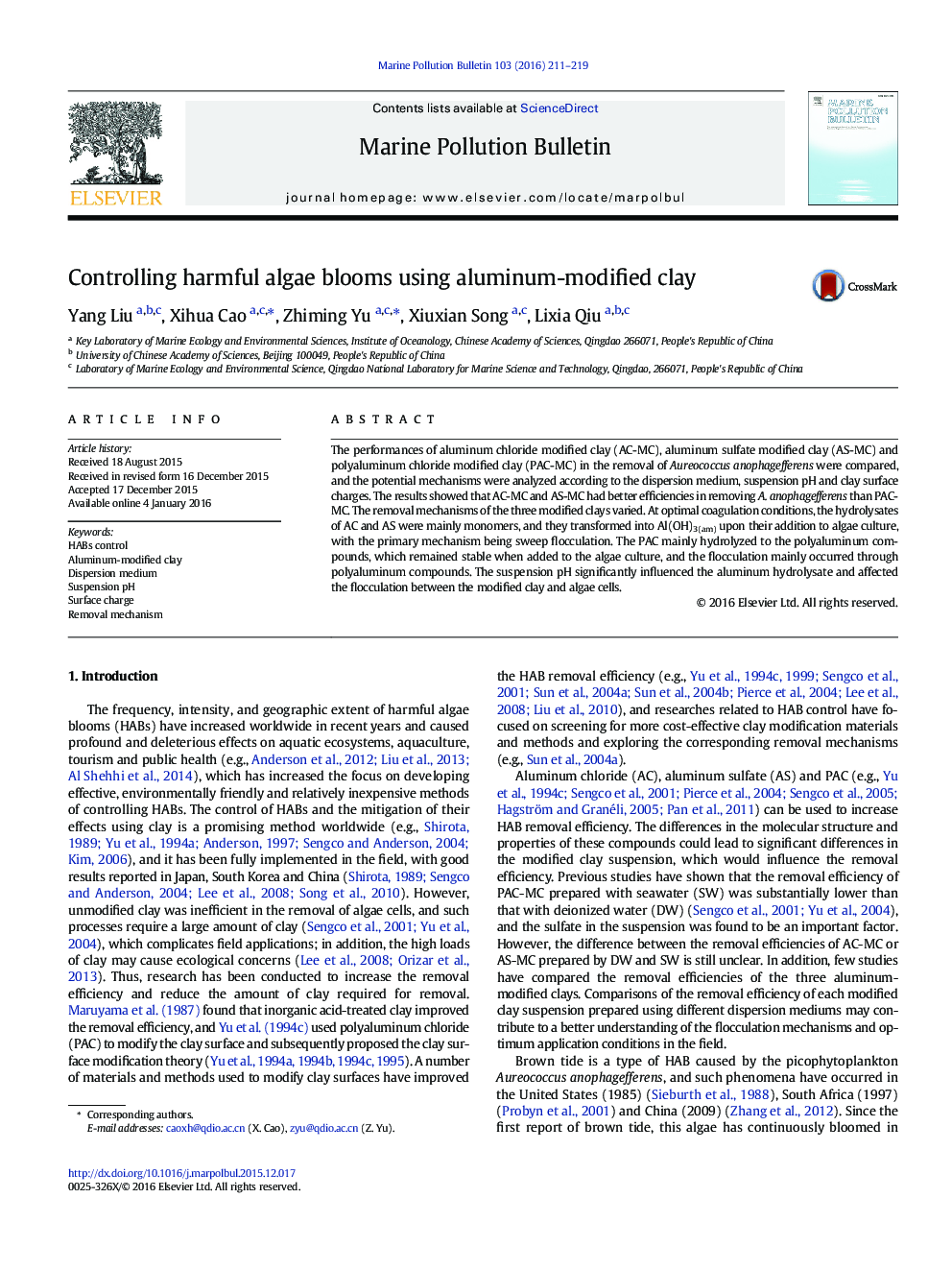| Article ID | Journal | Published Year | Pages | File Type |
|---|---|---|---|---|
| 6356101 | Marine Pollution Bulletin | 2016 | 9 Pages |
Abstract
The performances of aluminum chloride modified clay (AC-MC), aluminum sulfate modified clay (AS-MC) and polyaluminum chloride modified clay (PAC-MC) in the removal of Aureococcus anophagefferens were compared, and the potential mechanisms were analyzed according to the dispersion medium, suspension pH and clay surface charges. The results showed that AC-MC and AS-MC had better efficiencies in removing A.anophagefferens than PAC-MC. The removal mechanisms of the three modified clays varied. At optimal coagulation conditions, the hydrolysates of AC and AS were mainly monomers, and they transformed into Al(OH)3(am) upon their addition to algae culture, with the primary mechanism being sweep flocculation. The PAC mainly hydrolyzed to the polyaluminum compounds, which remained stable when added to the algae culture, and the flocculation mainly occurred through polyaluminum compounds. The suspension pH significantly influenced the aluminum hydrolysate and affected the flocculation between the modified clay and algae cells.
Related Topics
Physical Sciences and Engineering
Earth and Planetary Sciences
Oceanography
Authors
Yang Liu, Xihua Cao, Zhiming Yu, Xiuxian Song, Lixia Qiu,
